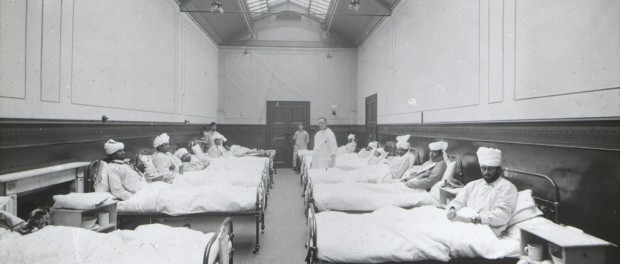India’s role in both World Wars
During World War One, India provided over a million volunteer soldiers to swell the depleted British ranks. The colonial theory of “martial races” influenced their selection. It dictated that certain races and castes were more “loyal” and “warlike.” For example, it favoured “loyal” Sikhs, Punjabi Muslims, and Gurkas. Whilst discouraging “disloyal” Bengalis and high-caste Hindus.
Of the 1.3 million who served in India’s army during World War One, approximately 400,000 were Muslims. Whether for honour, money or loyalty to the Empire, their contributions proved vital.

For a Eurocentric war, many overlook the colonial patchwork of our forces. Over 15,000 West Indians volunteered for the British West India Regiment and donated money to help the war effort. Soldiers from Australia, Canada, and New Zealand contained First Nations and Aboriginal men. Other colonial powers drew forces from parts of Africa. Britain recruited the Chinese Labour Corps to relieve soldiers from manual labour. But they were also open to great exploitation. Some fought for the British under a religious persuasion in the Jewish Legion. Even the Central Powers had multi-ethnic and religious forces (e.g. Arab, Slav, Kurd, and Albanian). An overlooked part of German history shows that 12,000 Jewish men died in the service of their country during WW1.
Case study: Brighton
The city of Brighton holds a unique place in the hearts of many British Indians thanks to its role during World War I. Various buildings became makeshift hospitals for Indian troops under the fog of war.
Cultural sensitivities also helped foster loyalty. Bacon, pork and beef went off the menu. Muslim soldiers had separate kitchens to prepare meat within Islamic rites. Ingredients were imported from abroad and locally sourced so individuals made dal and chapattis in gas-fired ovens.
In return for the kind hospitality, a permanent ‘thank you’ from India was erected in 1921. The India Gate was presented by the Maharaja of Patiala, Bhupinder Singh. The inscription read:
Singh championed the British war effort and reminded an eager crowd that he sent 28,000 men from his own state to fight. The ceremony was immortalised in film by British Pathe and in various photographs.
World War II
By the end of the Second World War, India’s army reached 2.5 million, with Muslims making up around a third of the numbers at any one time. Many recruits came from what is now Pakistan. The academic, Jahan Mahmood, looked at 5,500 Indian army deaths in Italy. Mr Mahmood’s work helped many young British Muslims trace their roots to those who served in this period. Of the 122 deaths of soldiers under 18, 90 were Muslim. Among them were three 15-year-olds – Amir Khan, Gulab Khan, and Mian Khan. Asians also helped in other areas – on merchant ships and in factories. Others worked as Air Raid Precaution Wardens, nurses and firemen.
